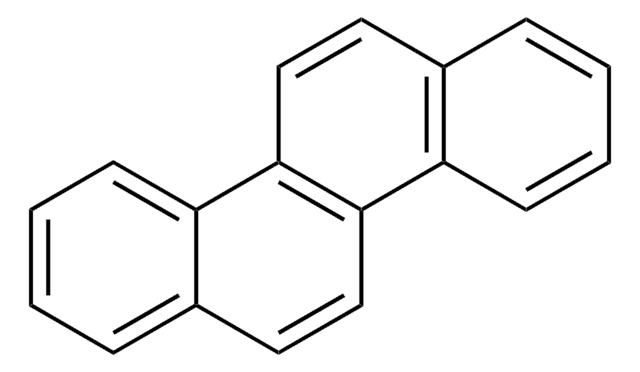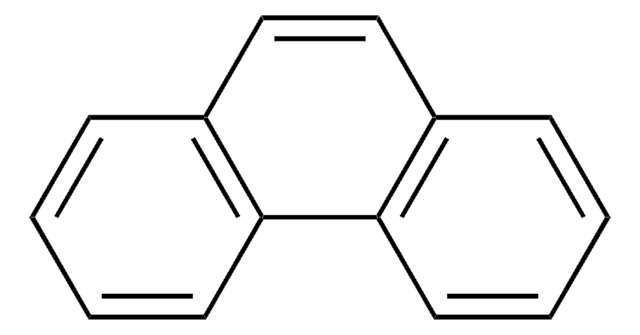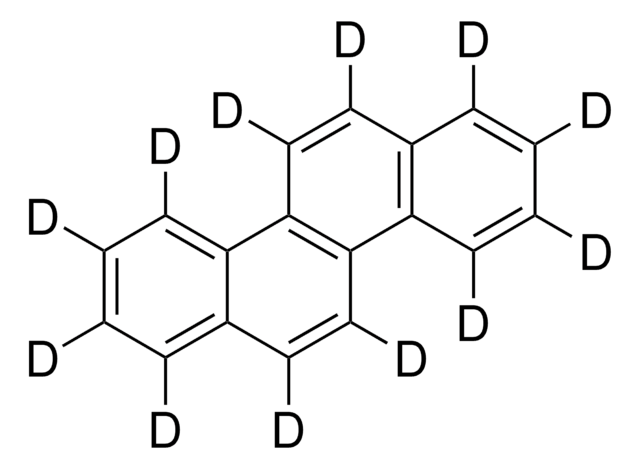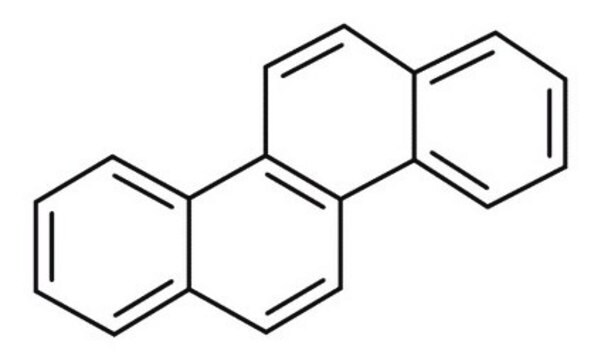40074
Chrysen -Lösung
certified reference material, 1000 μg/mL in acetone
About This Item
Empfohlene Produkte
Qualität
certified reference material
TraceCERT®
Produktlinie
TraceCERT®
Analysenzertifikat (CofA)
current certificate can be downloaded
Verpackung
ampule of 1 mL
Konzentration
1000 μg/mL in acetone
Methode(n)
HPLC: suitable
gas chromatography (GC): suitable
Anwendung(en)
cleaning products
cosmetics
environmental
food and beverages
personal care
Format
single component solution
Lagertemp.
2-8°C
InChI
1S/C18H12/c1-3-7-15-13(5-1)9-11-18-16-8-4-2-6-14(16)10-12-17(15)18/h1-12H
InChIKey
WDECIBYCCFPHNR-UHFFFAOYSA-N
Suchen Sie nach ähnlichen Produkten? Aufrufen Leitfaden zum Produktvergleich
Anwendung
Sonstige Hinweise
Rechtliche Hinweise
Signalwort
Danger
H-Sätze
Gefahreneinstufungen
Aquatic Chronic 3 - Carc. 1B - Eye Irrit. 2 - Flam. Liq. 2 - STOT SE 3
Zielorgane
Central nervous system
Zusätzliche Gefahrenhinweise
WGK
WGK 3
Flammpunkt (°F)
1.4 °F
Flammpunkt (°C)
-17.0 °C
Hier finden Sie alle aktuellen Versionen:
Besitzen Sie dieses Produkt bereits?
In der Dokumentenbibliothek finden Sie die Dokumentation zu den Produkten, die Sie kürzlich erworben haben.
Protokolle
US EPA Method 8270 (PAH only): GC Analysis of PAHs on SLB®-5ms
US EPA Method 610 describes the analysis of polynuclear aromatic hydrocarbons (commonly referred to as PAHs or PNAs) by both HPLC and GC.
HPLC Analysis of PAHs on SUPELCOSIL™ LC-PAH
Unser Team von Wissenschaftlern verfügt über Erfahrung in allen Forschungsbereichen einschließlich Life Science, Materialwissenschaften, chemischer Synthese, Chromatographie, Analytik und vielen mehr..
Setzen Sie sich mit dem technischen Dienst in Verbindung.![Benzo[a]pyren analytical standard, for environmental analysis](/deepweb/assets/sigmaaldrich/product/structures/253/820/be96d879-1811-46c0-8f11-612019691c2d/640/be96d879-1811-46c0-8f11-612019691c2d.png)

![Benzo[b]fluoranthen analytical standard](/deepweb/assets/sigmaaldrich/product/structures/175/744/6fa5fca2-b6ec-47b6-ab7a-fe895843f226/640/6fa5fca2-b6ec-47b6-ab7a-fe895843f226.png)





